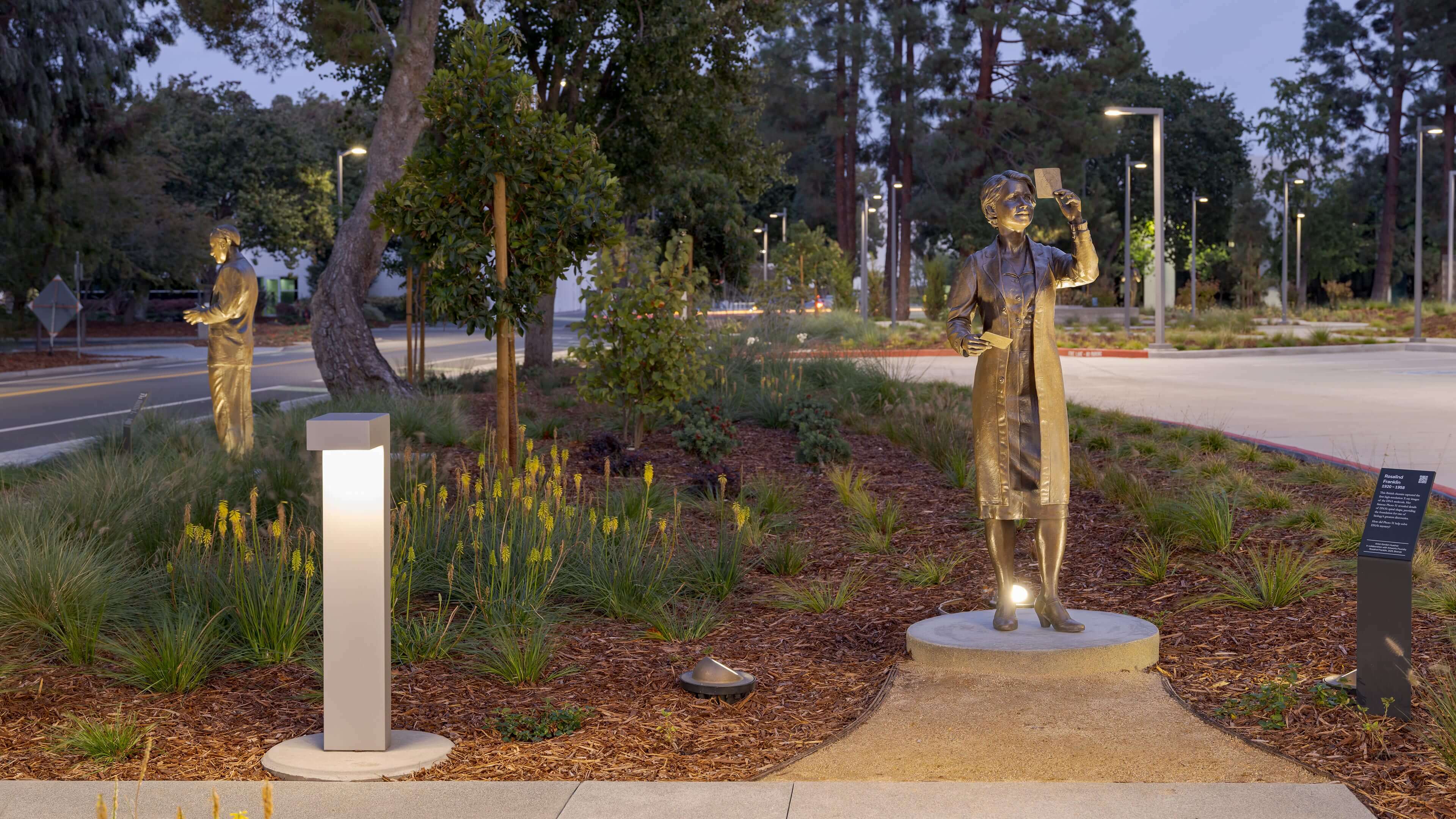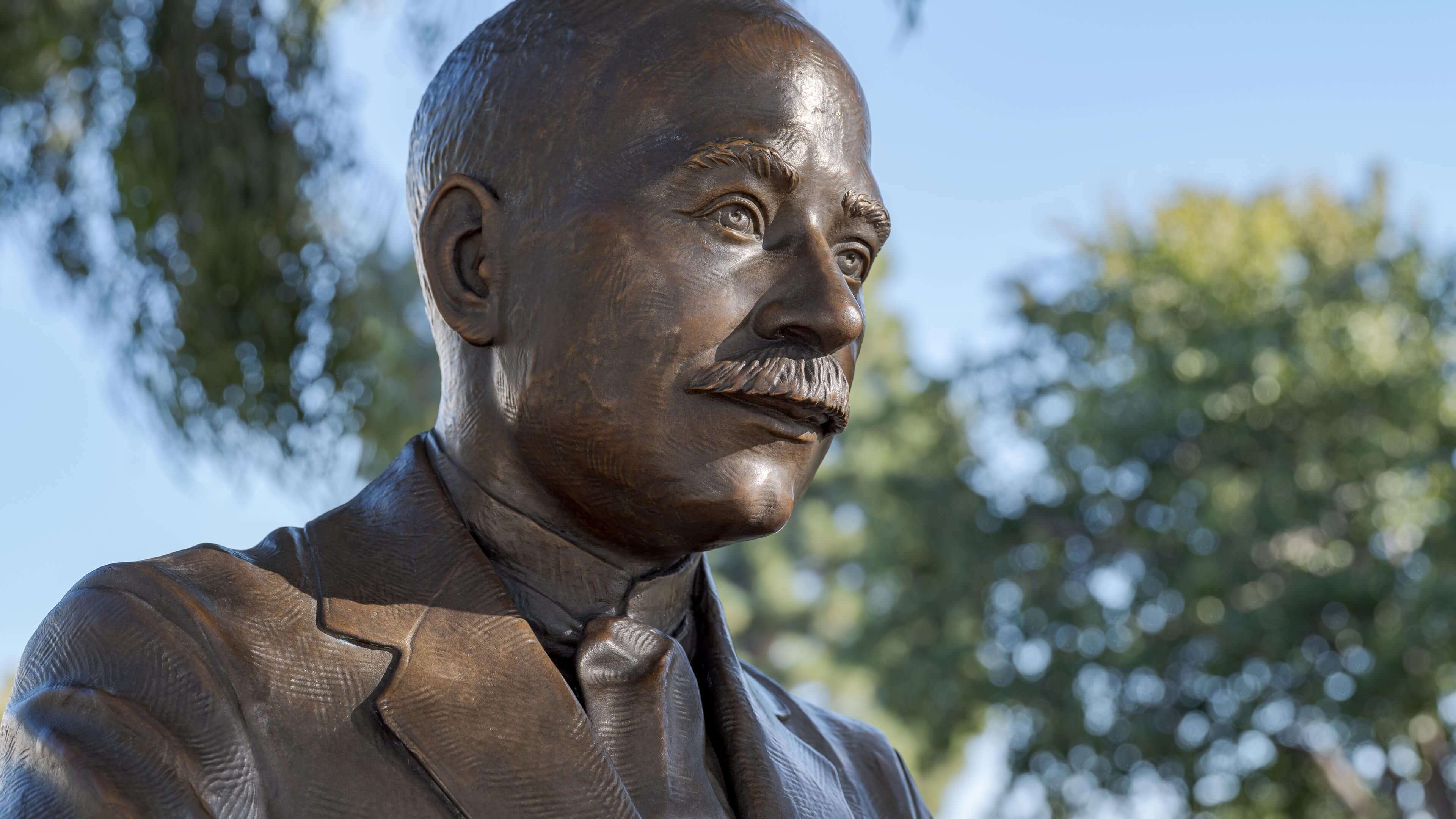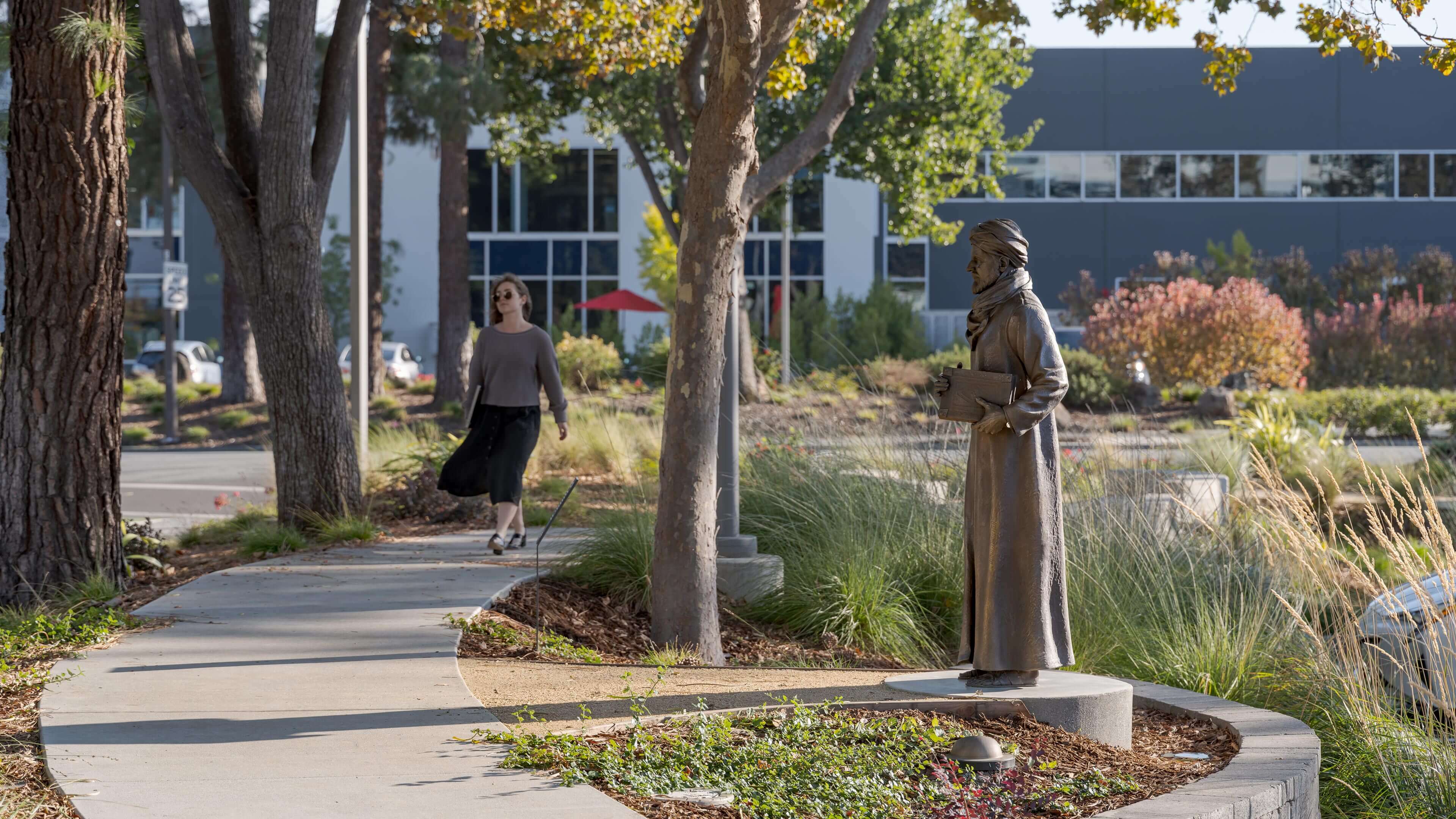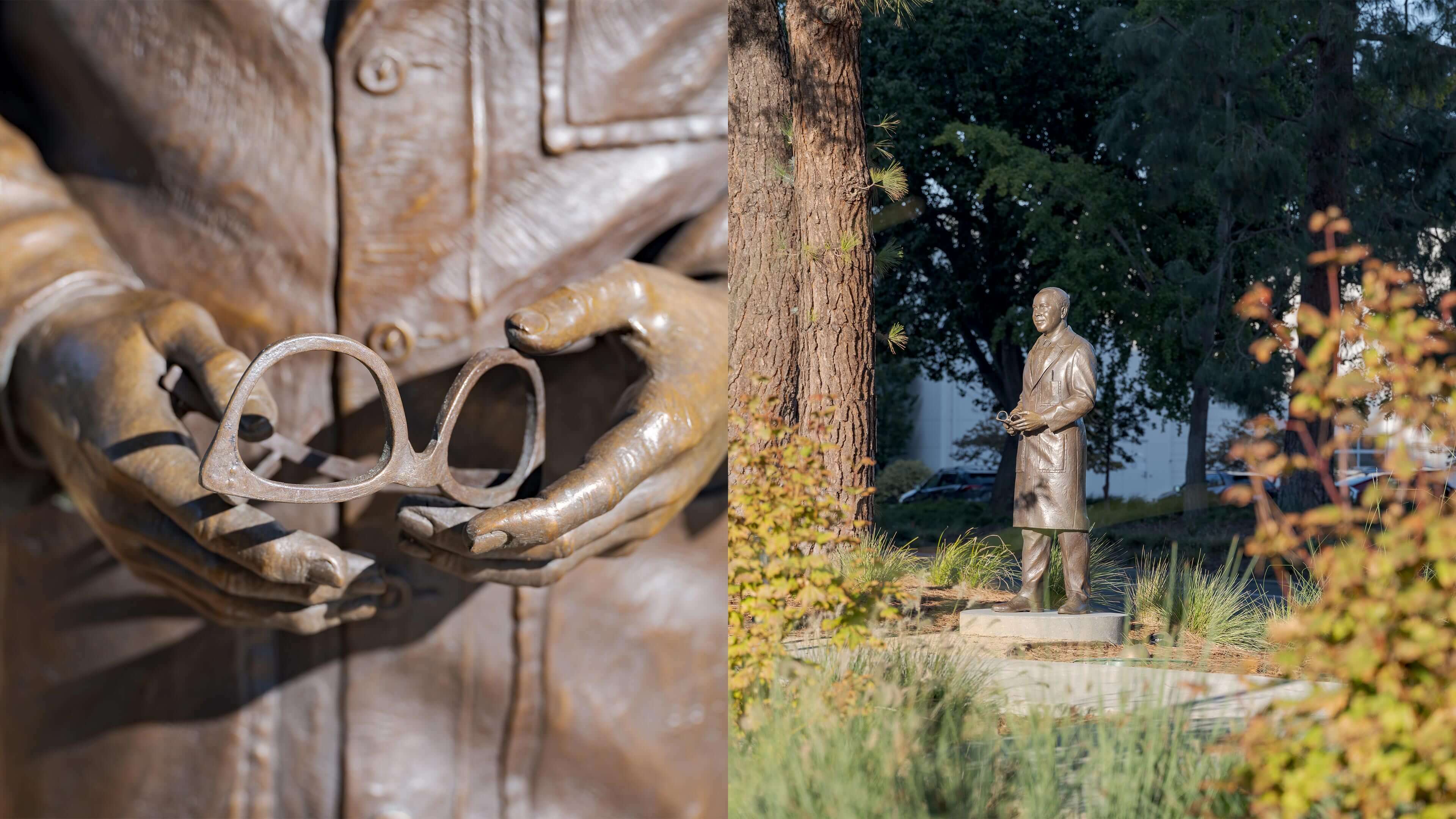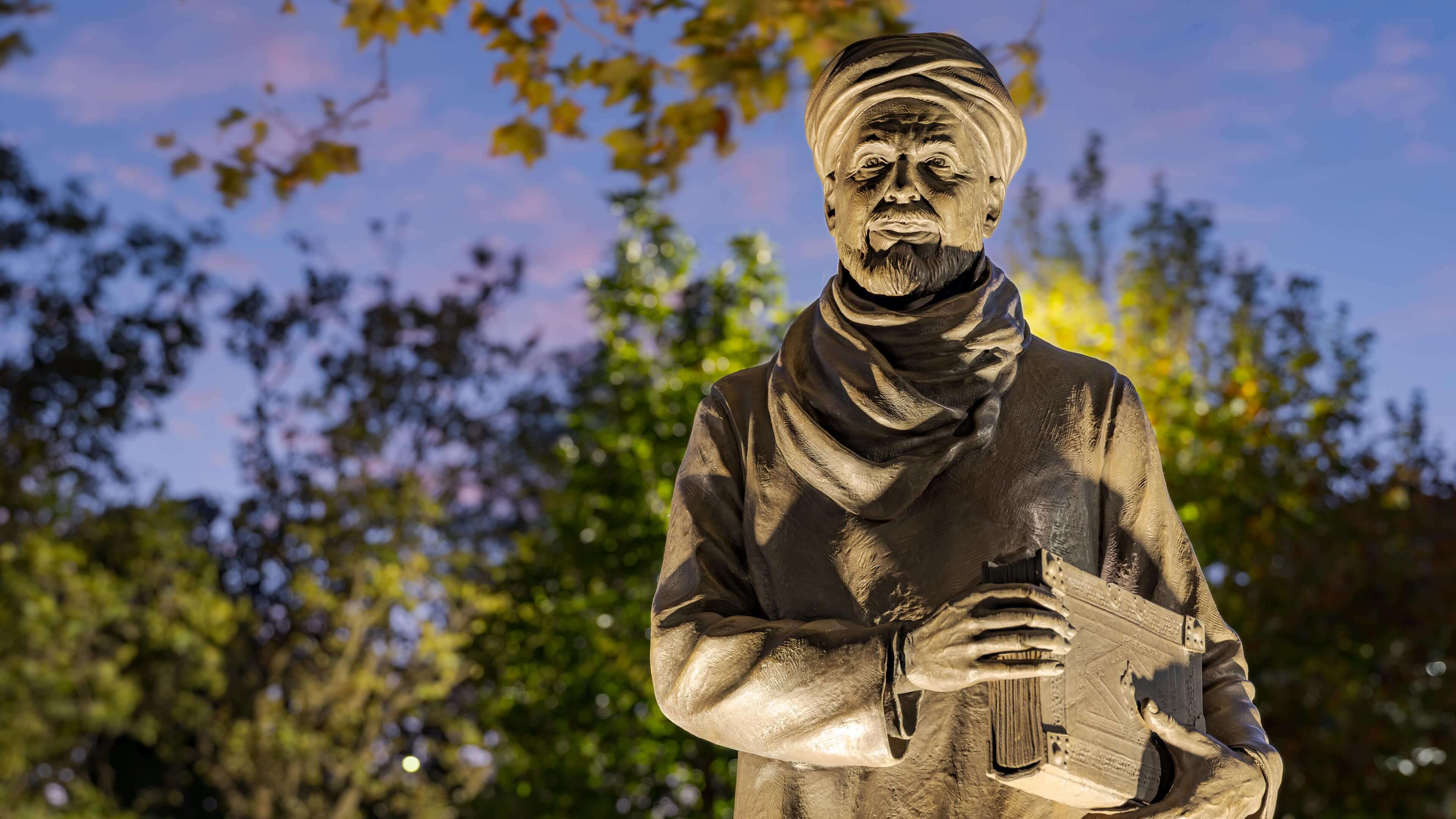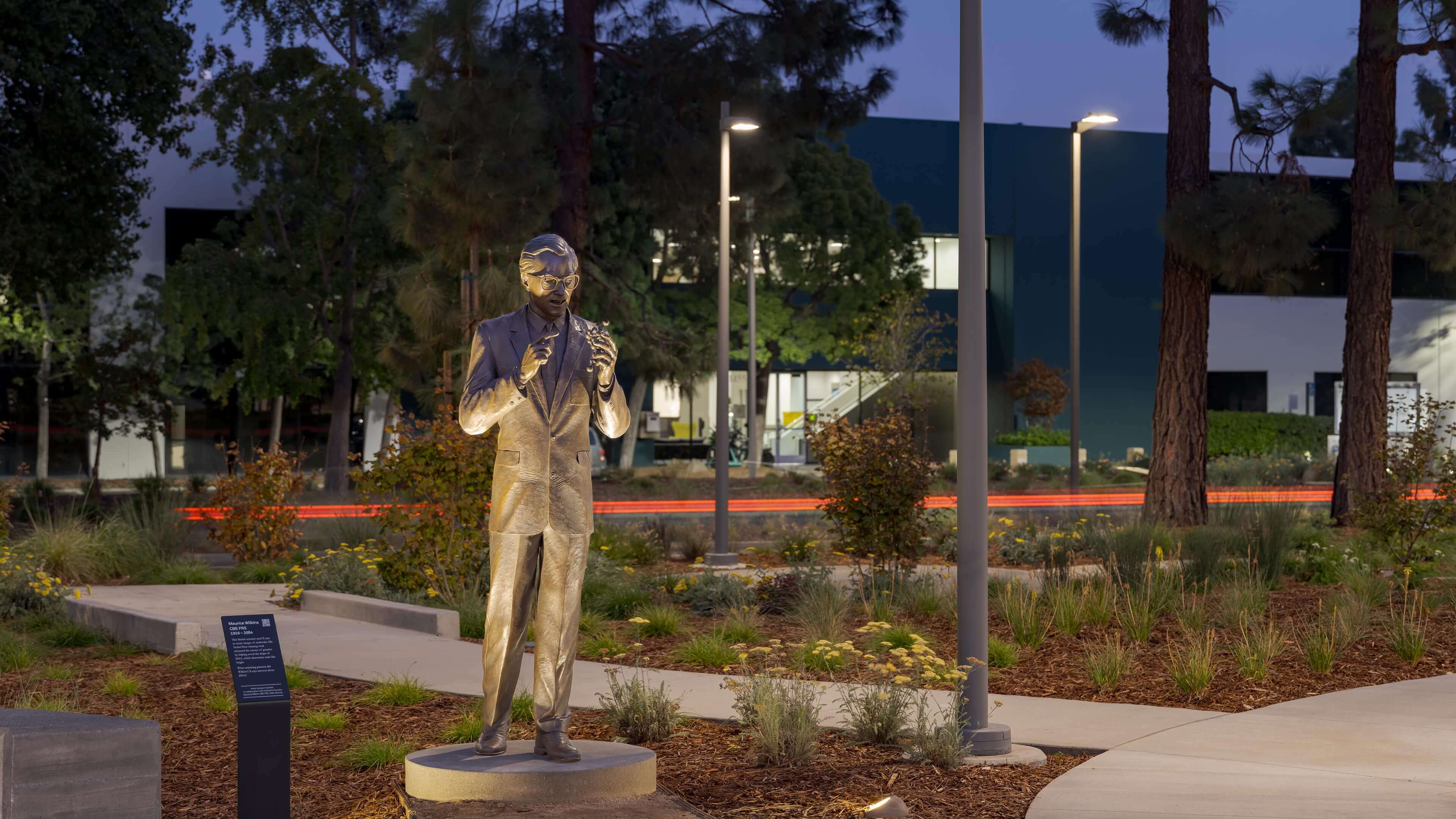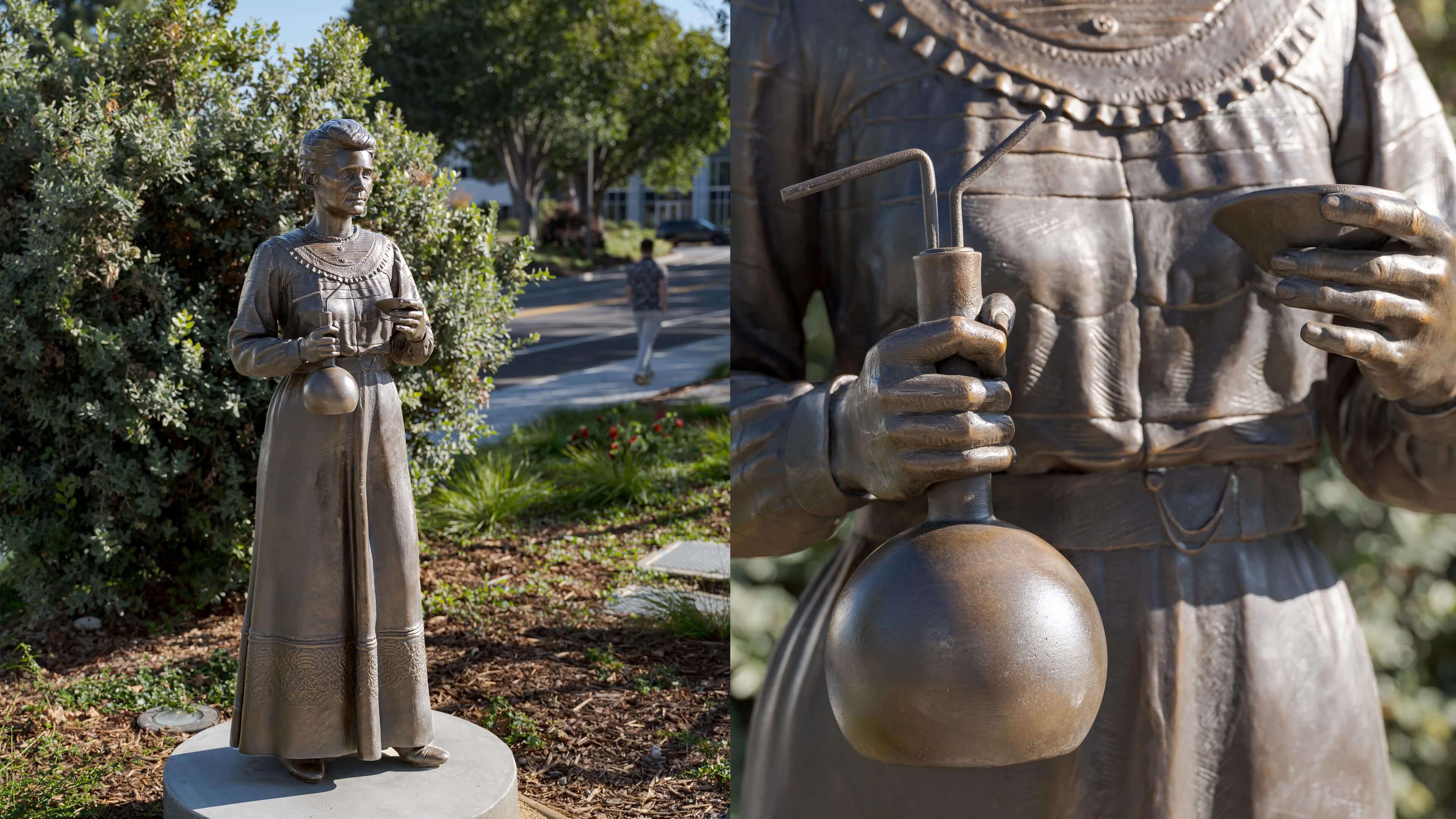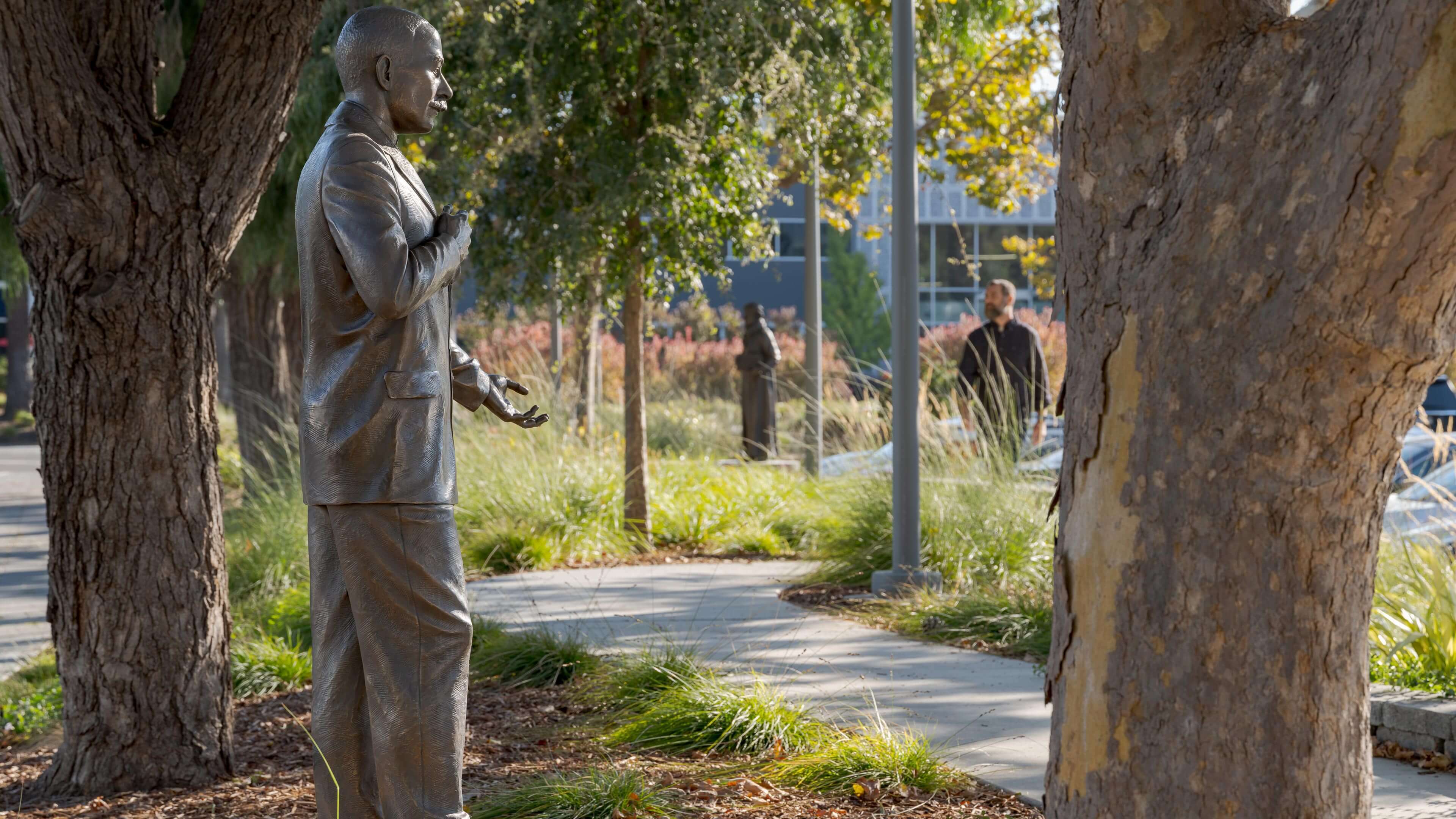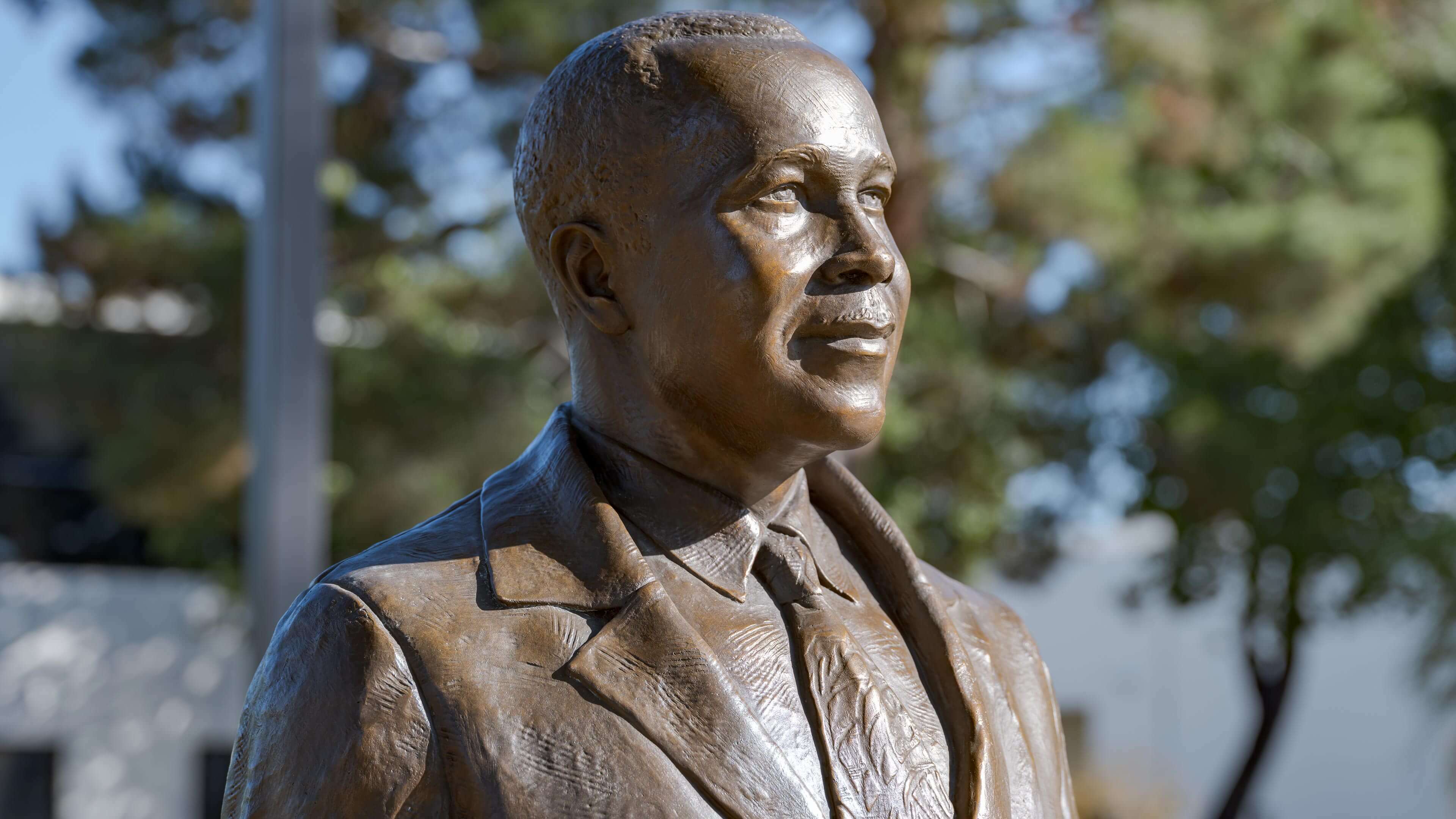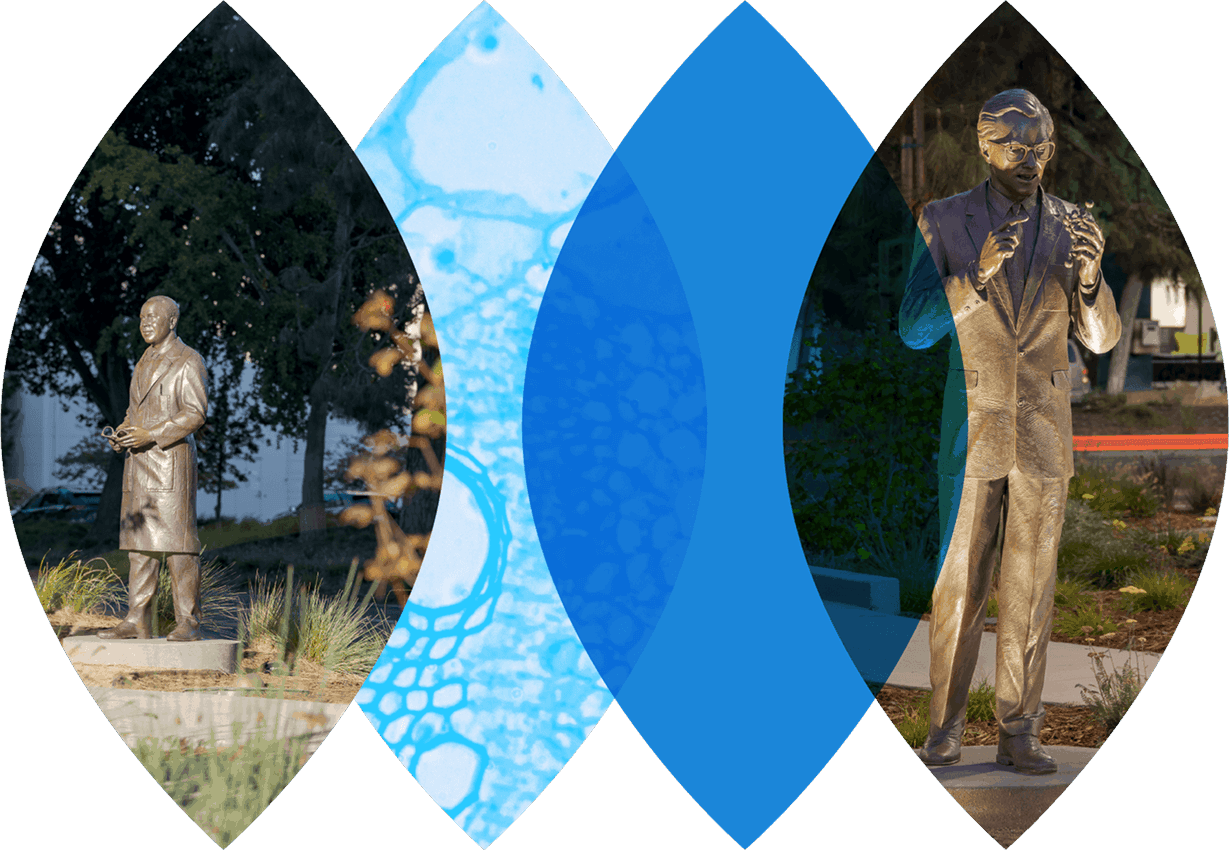
Walk the path of innovation
We all stand on the shoulders of giants. This art installation by artist Gordon Huether, set along a shady path on campus, features life-sized bronze sculptures of a diverse group of scientists from around the globe who have deeply impacted their respective fields. By creating quiet spaces for reflection amongst these sometimes unsung heroes of science, we hope to foster connection to the past and inspire the great thinkers of tomorrow.
The Innovators
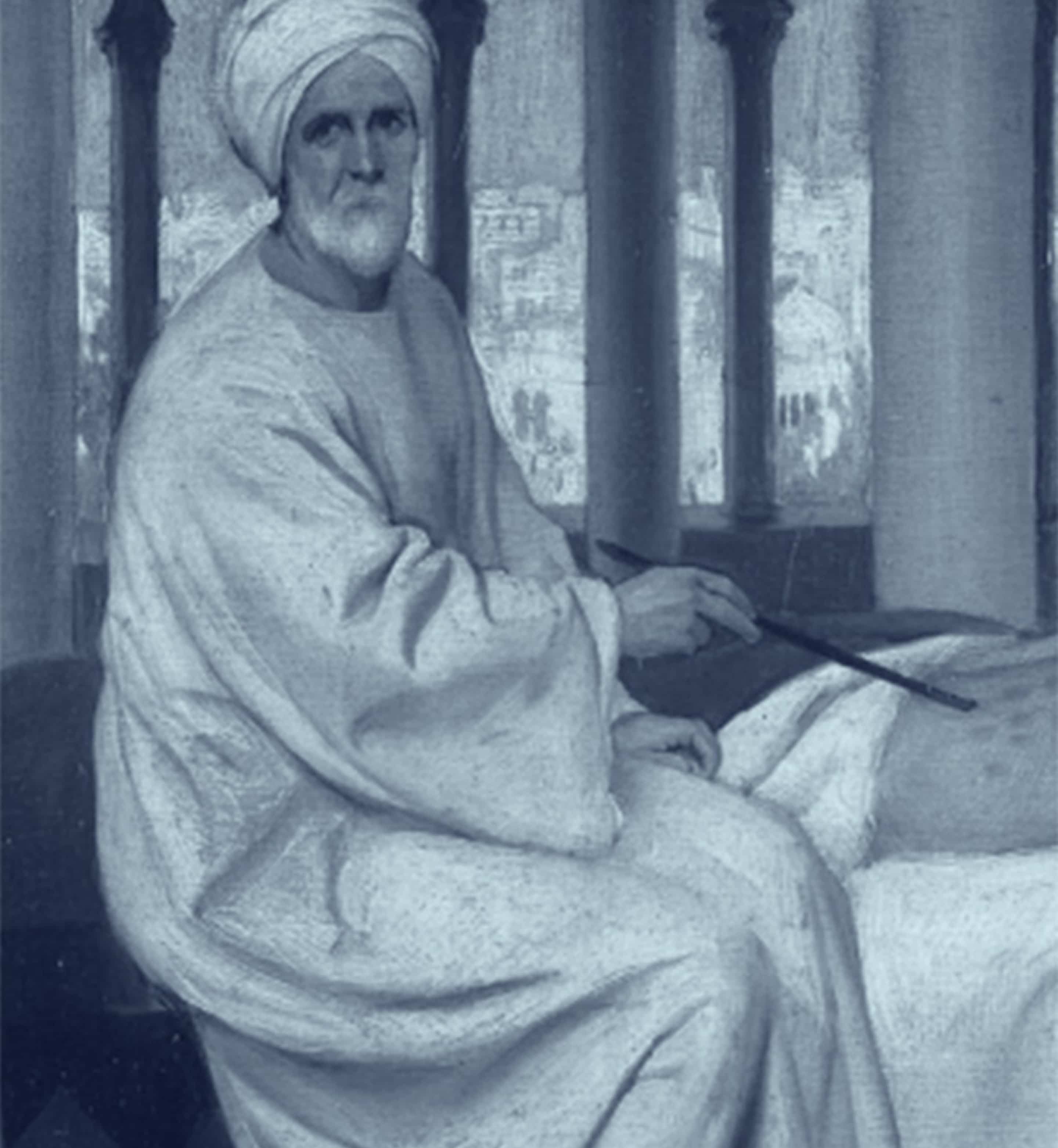
Al-Zahrawi
Lived 936 -1013
Al-Zahrawi was an Arab surgeon in modern-day Spain during the Islamic Golden Age, an important time for science and art. His 30-volume medical encyclopedia remained the primary source on surgery in Europe for the next 500 years. The book explained how to use over 200 surgical tools—many of which he invented. These tools and techniques included ways to stop bleeding, stitch wounds, and set broken bones. Al-Zahrawi showed great care for his patients.
Al-Zahrawi transformed surgery by recording detailed instructions on surgical tools and methods. Before him, such knowledge was passed down by word of mouth. His work turned it into a science that could be taught, practiced, and improved over time.

Avicenna
Lived 980 – 1037
Avicenna was a Persian doctor, philosopher, mathematician, astronomer, and chemist during the Islamic Golden Age. At age 21, he began writing the five-volume Canon of Medicine, combining medical knowledge from Greek, Roman, Persian, Indian, and earlier Islamic sources with his own observations.
The book explained the human body and how to examine patients, diagnose diseases, understand mental health, and suggest treatments. It became the main medical textbook in Europe for over 500 years and the Islamic world for more than 800 years.
He not only created the first complete medical textbook, organizing knowledge systematically, but he also taught the importance of observing patients closely and using careful reasoning. This helped doctors stop relying on superstition or guesswork. His evidence-based methods still influence how medical students learn today.
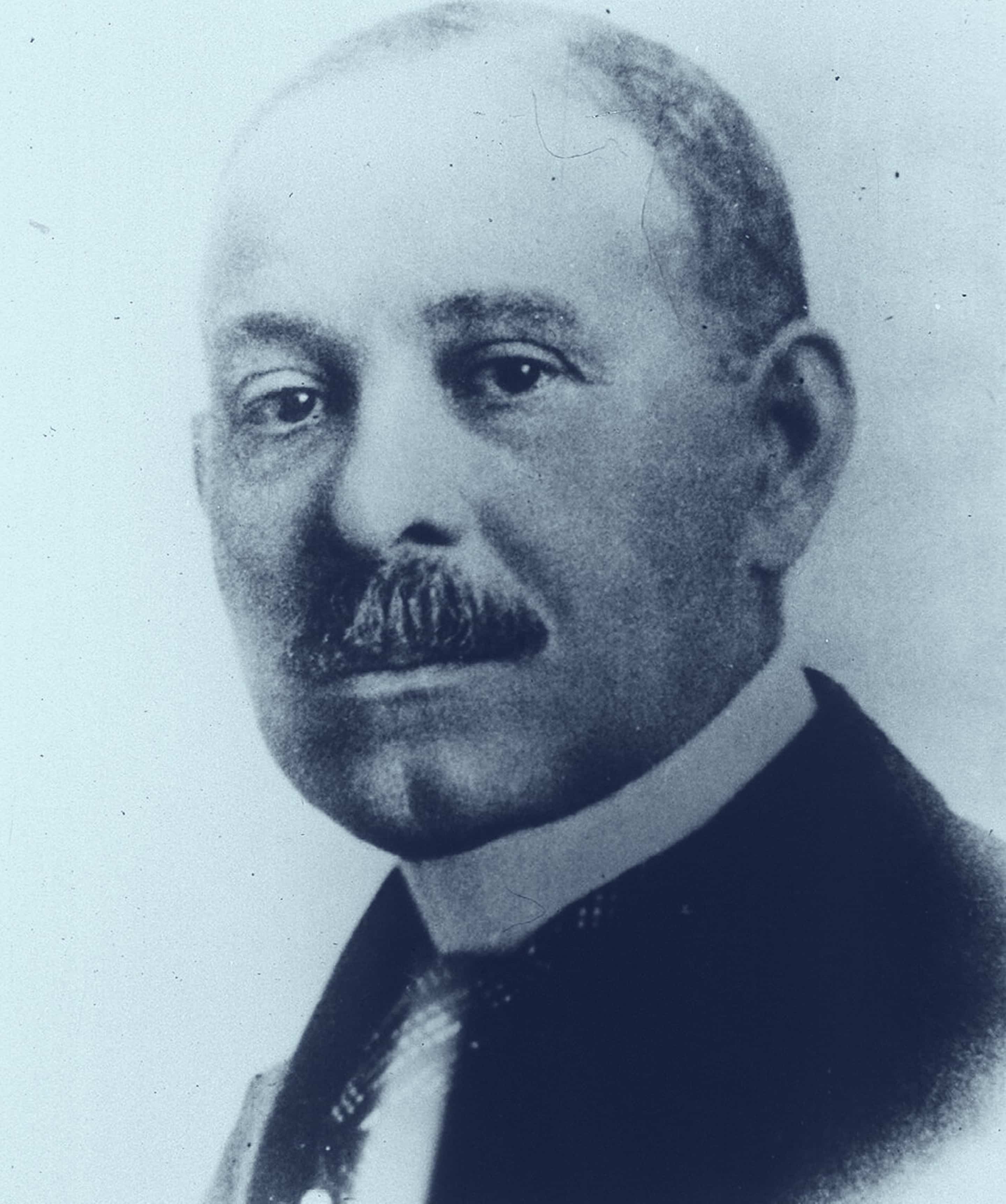
Daniel Hale Williams
Lived 1856 - 1931
Williams was a trailblazing surgeon whose skill, courage, and vision changed medicine. In 1891, he founded Provident Hospital in Chicago, the first hospital in the US where people of all backgrounds could receive care or train as doctors and nurses.
Two years after it opened, a man with a knife wound to the chest came to the hospital. Most doctors wouldn’t attempt heart surgery—but Dr. Williams did. With no X-rays or modern tools, he carefully operated, and the patient lived for years.
Williams proved that open-heart surgery could truly succeed. By challenging segregation in medicine, he created new opportunities for care and training. His bold leadership inspired generations of medical professionals to innovate and care for all patients.
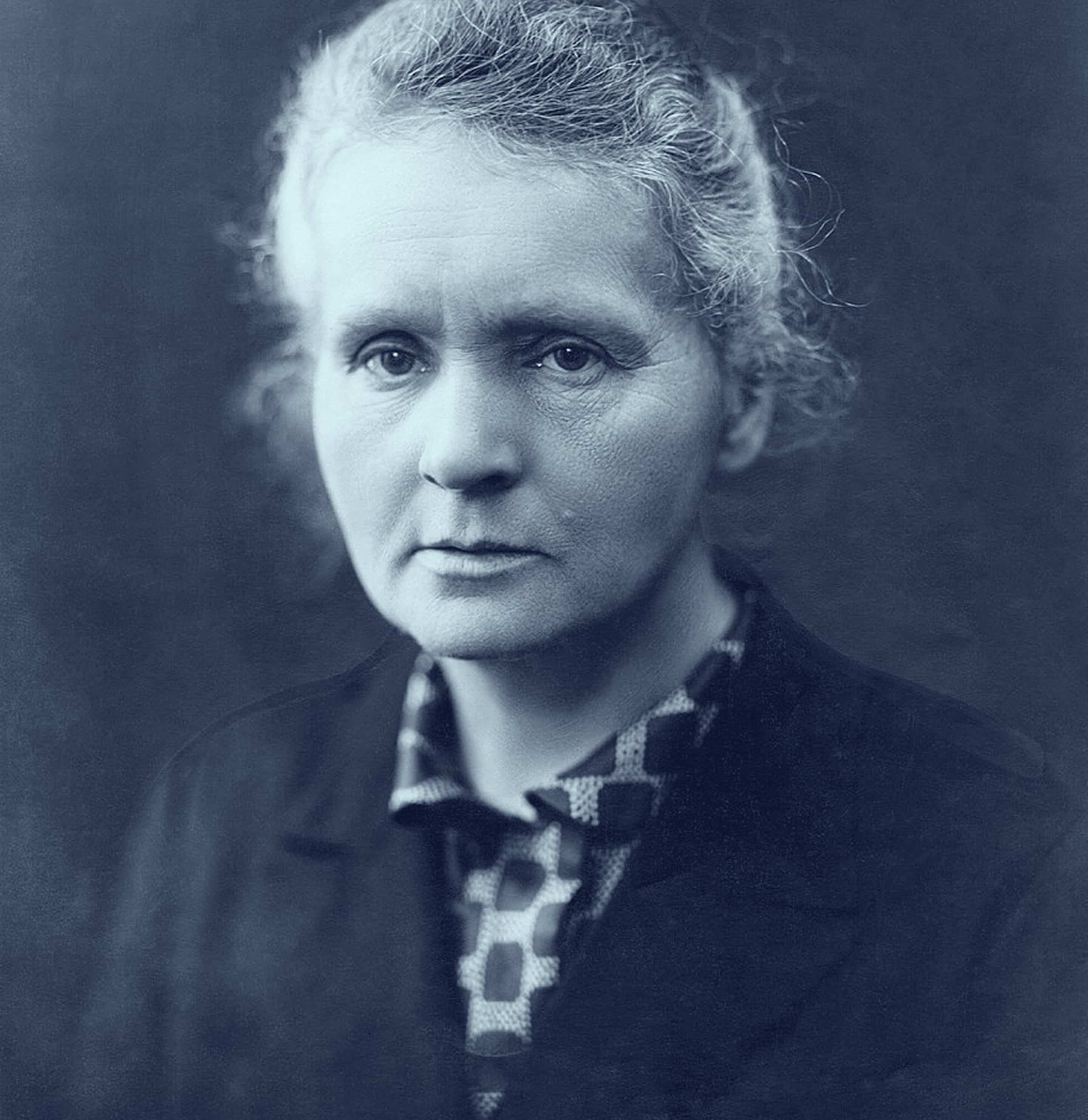
Marie Curie
Lived 1867 - 1934
This groundbreaking scientist discovered two materials, radium and polonium, which give off invisible energy that passes through solid objects. Naming this energy "radioactivity," she developed ways to measure and use it.
Curie’s research led to powerful medical tools like X-rays and cancer treatments. During World War I, she helped equip ambulances with portable X-ray machines, called “Little Curies,” saving countless soldiers' lives.
At 36, she became the youngest Nobel Prize recipient. At 43, she became the first person to win two Nobel Prizes, in Physics and Chemistry.
By bravely working with unknown and potentially dangerous substances, Curie discovered, measured, and turned radioactivity into life-saving innovations. By persevering from research to real-world application, she opened new frontiers in physics, chemistry, nuclear energy, and medicine.
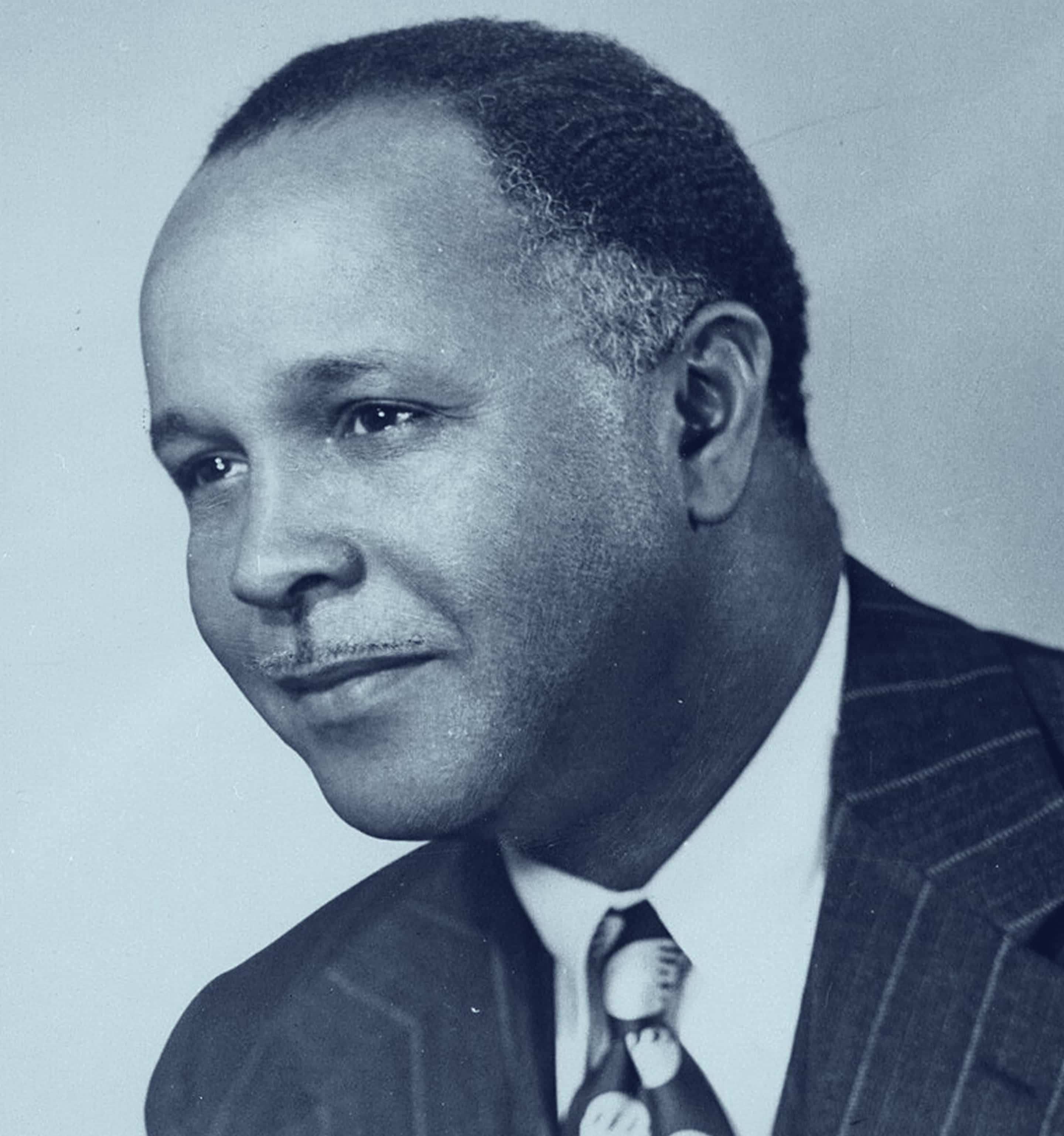
Percy Lavon Julian
Lived 1899 – 1975
A pioneering chemist, Julian helped make important medicines that improved millions of lives. He developed ways to cheaply produce hormones like progesterone and cortisone, which treat arthritis, allergies, and other health problems, and created the first lab-made version of a drug used to treat glaucoma and protect eyesight. His groundbreaking work earned him more than 130 patents and enabled him to launch a very successful business.
Julian developed methods to extract natural chemicals from common plants like soybeans and wild yams and transform them into life-saving hormones. This creative inventor also used soybean protein to create a fire-fighting foam that helped the U.S. Navy put out dangerous oil fires during World War II.
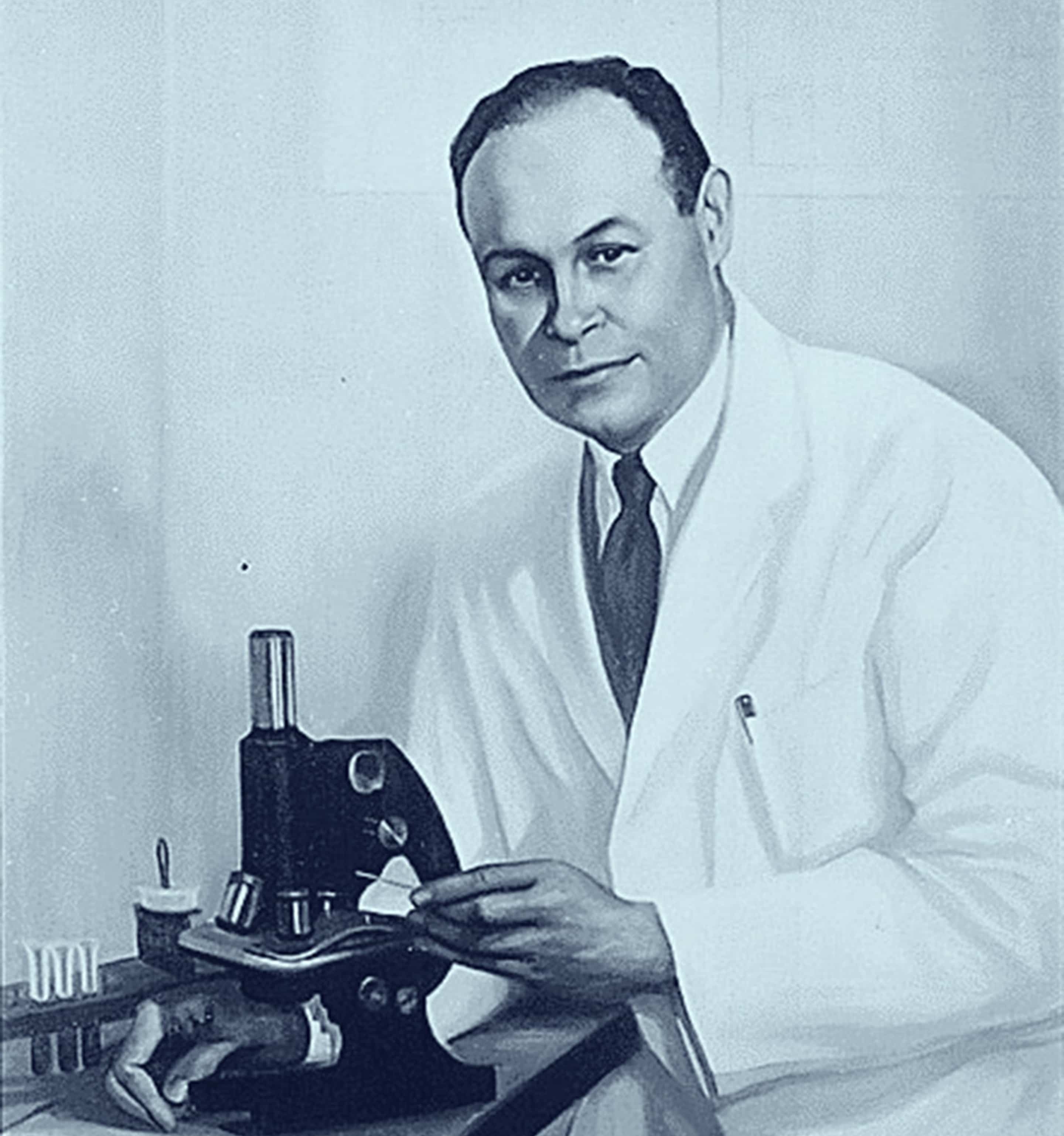
Charles Drew
Lived 1904– 1950
Drew discovered that plasma, the liquid part of blood, could be stored longer and shipped to save lives. His breakthrough made blood transfusions safer and helped create blood banks. During World War II, he led a program to collect plasma for injured soldiers. He also invented "bloodmobiles"—trucks that travel to collect blood donations.
Blood transfusions help accident victims, surgery patients, people with diseases like sickle cell anemia or cancer, mothers during childbirth, burn victims, and some premature babies. Doctors have saved countless lives thanks to Charles Drew’s discoveries.
Dr. Drew also fought discrimination, protesting policies that turned away Black people who wanted to donate blood. His leadership inspired others to fight for fairness.
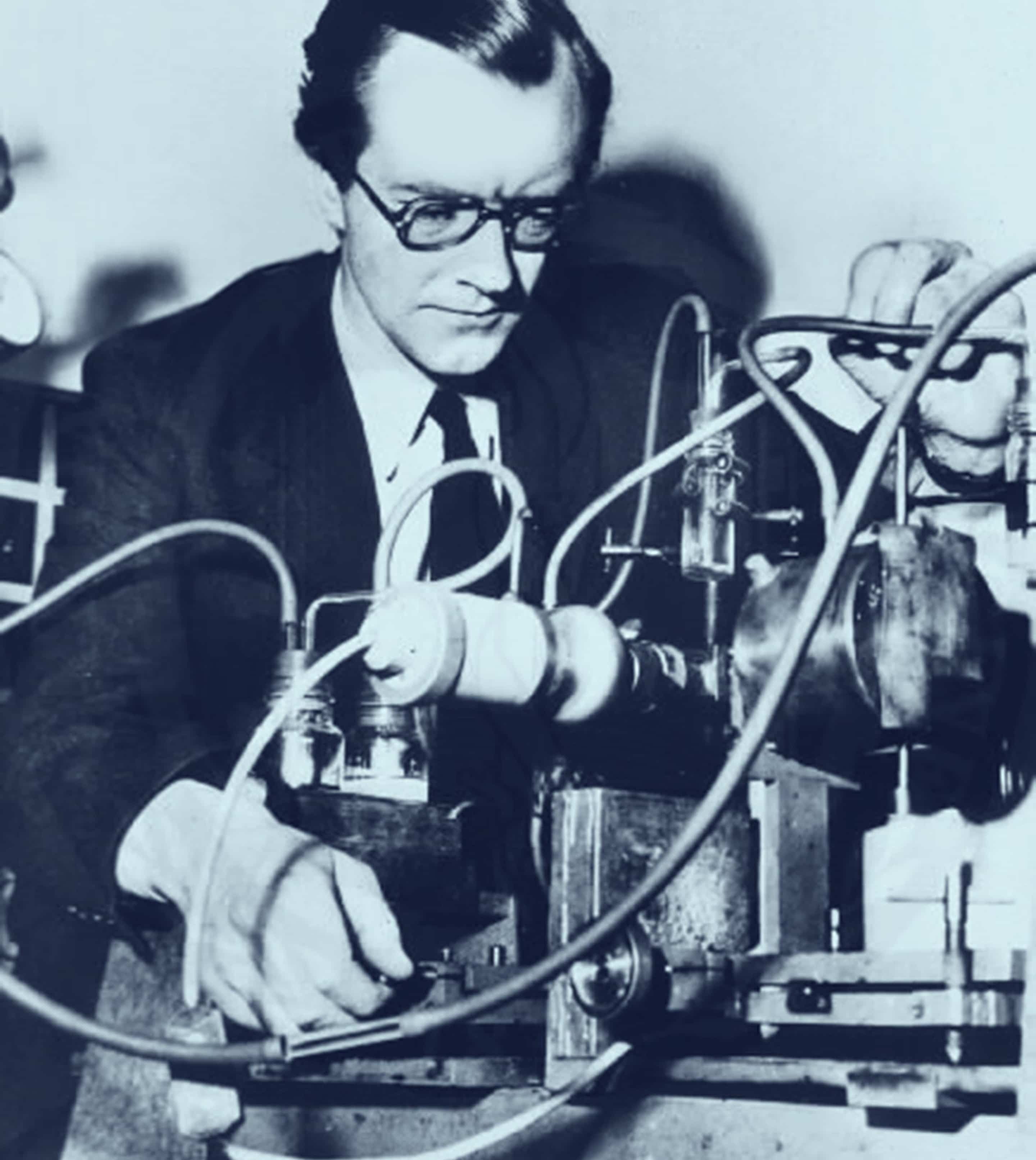
Maurice Wilkins CBE FRS
Lived 1916 - 2004
This scientist used powerful X-rays to take pictures of DNA, a tiny molecule found in all life forms. His images revealed that DNA has a spiral shape, giving scientists important clues about how DNA works.
Wilkins discovered that DNA’s spiral shape has repeating sections, like steps on a winding staircase. This pattern showed that DNA is like a code, with instructions (called genes) for how living things look and grow. His work helped researchers Crick and Watson dig deeper into DNA’s structure. Together they won a Nobel Prize for their discoveries that changed biology and medicine.
Although he worked on the atomic bomb during World War II, Wilkins later campaigned for nuclear disarmament and helped found the British Society for Social Responsibility in Science.
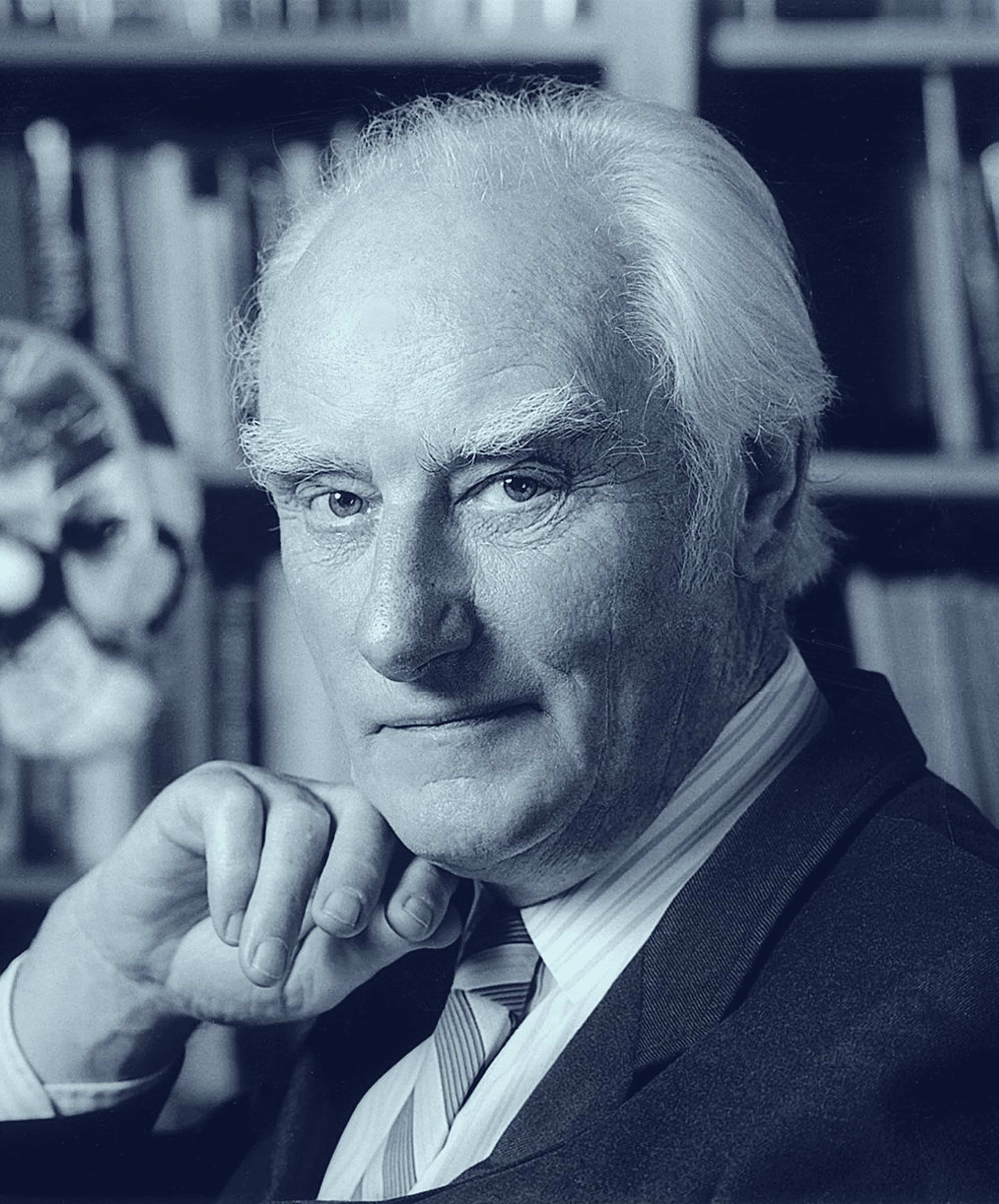
Francis Harry Compton Crick
Lived 1916 - 2004
Using clues from Franklin and Wilkins, British molecular biologist Crick and his partner James Watson built the first accurate model of DNA—a twisted ladder called a double helix. Scientists still use the same basic model today. This discovery changed science, helping explain how living things grow, heal, and pass traits from one generation to the next.
DNA’s double helix lets it split down the middle like a zipper so it can copy itself whenever a cell needs to grow or heal. The tight twisting also makes room to store billions of instructions in a tiny space. Understanding DNA’s shape led to amazing advances like solving crimes with genetic fingerprinting, developing new treatments for diseases, and creating vaccines that protect millions.
Photo: Marc Lieberman, duotone added
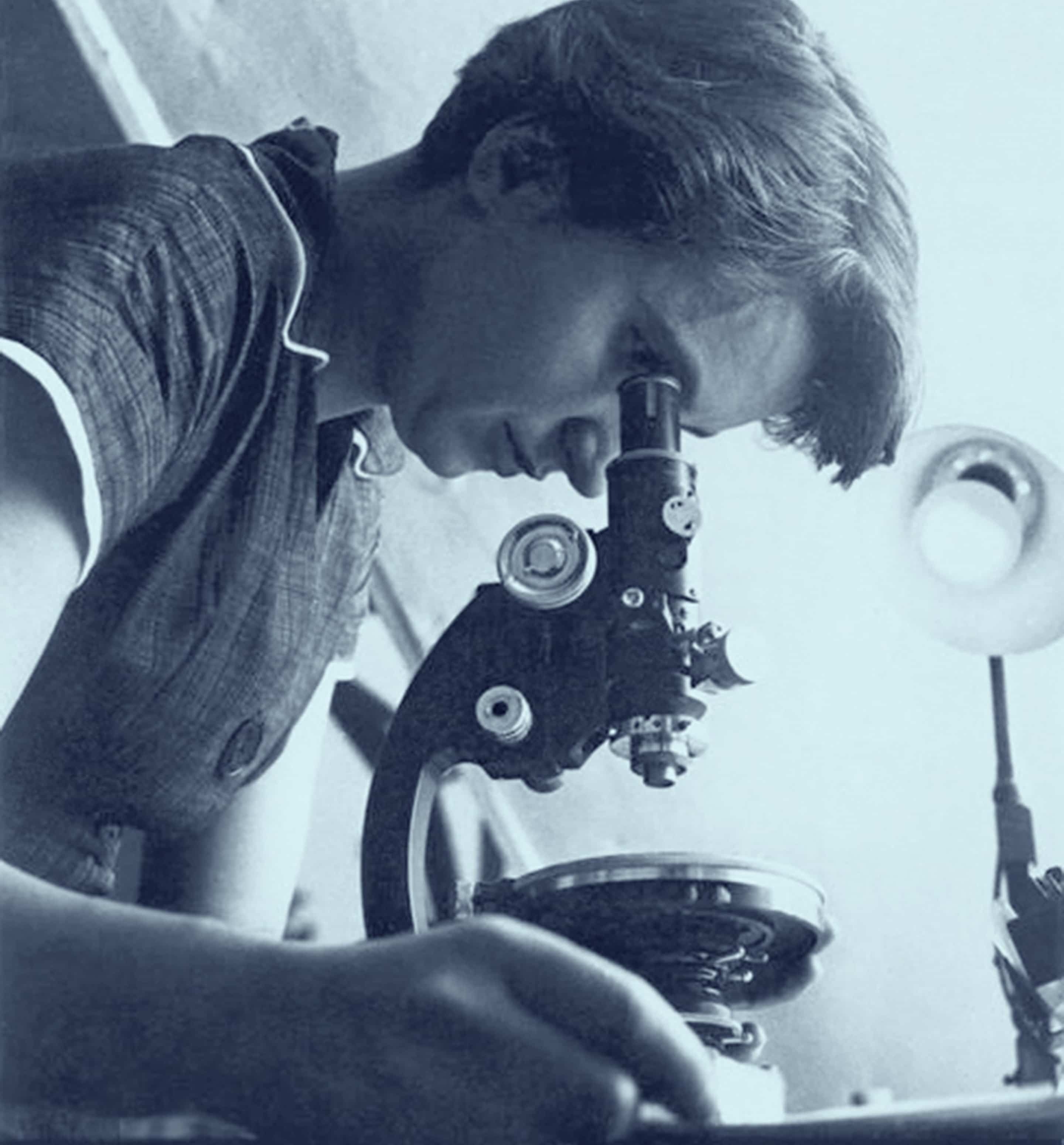
Rosalind Franklin
Lived 1920 – 1958
This brilliant British chemist created clear pictures of DNA, helping Crick and Watson make their big discovery. By carefully controlling the conditions of the DNA fibers and the surrounding air, she created incredibly detailed X-ray images of DNA and other molecules.
Her most famous image, “Photo 51,” revealed how far apart DNA strands are and how tightly they twist around each other. This precise information helped scientists understand how DNA’s shape impacts how it works.
Back then, Franklin did not get all the credit she deserved, but today she is celebrated for her skill and important role in discovering DNA’s shape.
From the personal collection of Jenifer Glynn, duotone added
